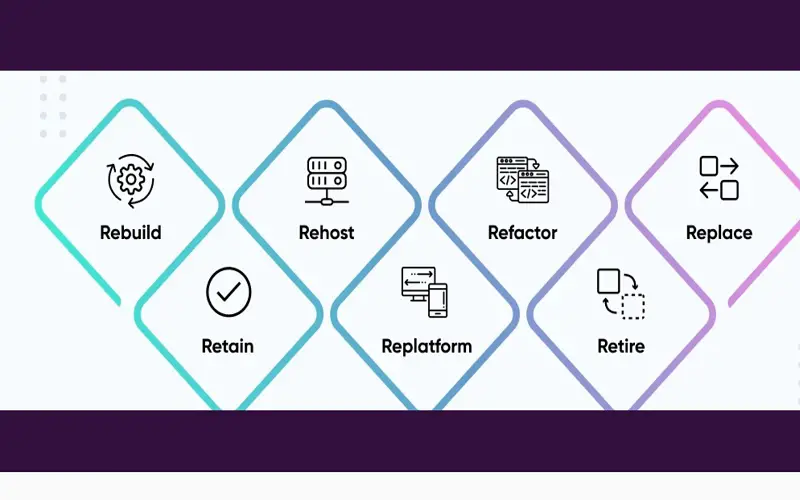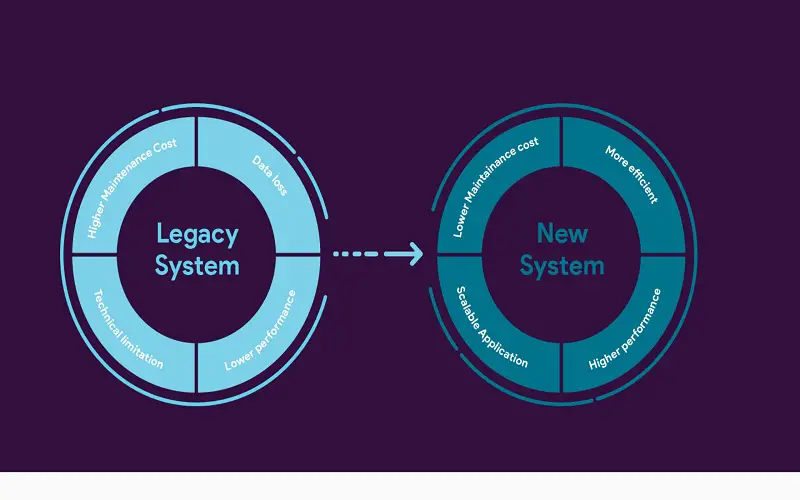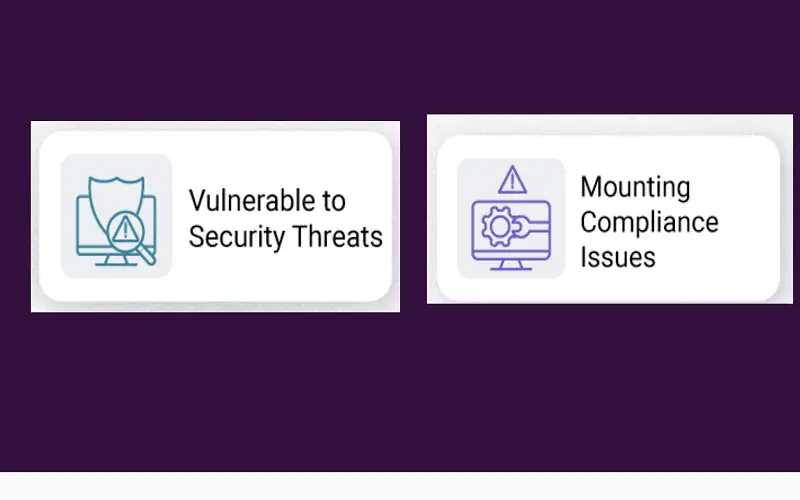
Define The Business Case
Evaluate The Legacy System
Identify The Modernization Strategy
Embracing The Latest Technology
Create A Roadmap To Modernization
Check For Security Issues And Regulatory Compliance
Extend The Legacy System
Consider Application Testing
Inform And Train All Users
Evaluate Modernization Results
With constantly evolving technological business needs, businesses must devise effective ways to modernize the legacy system. A legacy system is an information system consisting of complex codes and outdated technology. It is regarded as an impediment to business growth and survival. A legacy system makes it difficult for organizations expand or transform. Legacy system utilizes customer-owned software and hardware. But legacy systems are essential for routine digital business operations.
It becomes essential for companies to modernize legacy systems. Organizations can find it challenging to operate and scale their business with legacy systems. If the system is not updated on time, then there are chances that it might develop more bugs, resulting in reduced team productivity. An outdated system makes its difficult to support business processes and ensure data continuity. Modernizing legacy systems involves replacing outdated systems with the latest cloud solutions to enhance business productivity. Organizations must consider the current solutions and plan to incorporate more advanced features to modernize their present system.
The advantages of modernizing legacy systems are:
Some key technologies that play a crucial role in the modernization of legacy systems are:
Let us now check the top 10 ways to modernize legacy systems.
Defining the business case is a significant step towards modernizing the legacy systems. A well-documented business case helps stakeholders to understand a project’s purpose and stay focused throughout its lifecycle. While documenting a business case, it is necessary to include end-users, IT support staff, and project managers. The business case needs to be documented clearly and approved by all levels of management.

After defining the business case, the next step is to assess the existing legacy system. Companies should focus on gathering data to help project teams in designing strategic plans for legacy system modernization. Companies should assess the current application data to determine the number of users, their usage time, etc. Analyze the expenses incurred in software licensing, maintenance, and other technical services. Based on the assessment results, evaluate the areas that need improvement.

You should identify and select appropriate strategy for modernising the legacy system. The strategy should align with the app you want to update. Consider its risk and impact on the system and business process. Following are the strategies you can adopt for modernizing your business legacy systems:

Embracing the latest technology is a cost-effective approach to modernize the legacy systems. It streamlines the process of launching a project on a new platform. Replacing outdated legacy system with modern technology simplifies business processes and reduces operational costs. The latest technology comes with built-in features for scalability and flexibility, enabling projects to adapt to evolving business needs.

Creation of roadmap helps to define the stages involves in software modernization and milestones to achieve throughout the development process. The roadmap is used as a reference source by both technical and non-technical business teams to modernize their legacy applications. It also helps in easy identification and documention of dependancies that could negatively impact the deployment of new applications.

While upgrading the software, consider security issues and regulatory compliance. Software designers must devise solutions for their system and application safety. Modern applications have built-in Dynamic application security testing and the Static application security testing software for each deployed containers. The software enables developers to monitor their containers for security updates and replacement of outdated versions.

Check if your existing legacy system has some longevity before considering a replacement. It is unnecessary to replace your current legacy system if it performs the core functions decently. Instead, you can think of extending it. Extending your existing legacy system is an effective way to modernize your legacy system and reduce the expenses incurred in implementing massive software replacement project.

After replacing all the legacy components, businesses should carry out application testing and validation. They must conduct baseline performance test on all new and modified components. For data safety and integrity, data integrity test is ideal option. Businesses can also check if the latest software system meets client’s expectations using the user acceptance test.

It is very crucial to inform and train all the teammates about the latest advancements. Imparting comprehensive training helps in instilling a confidence in employees to embrace the change. Providing tutorials and interactive workshops helps users to understand and handle specific concerns efficiently. Online forums and help desks facilitates reinforced learning and diagnosing technical issues. Through proactive communication and training initiatives, organizations can ensure widespread adoption and acceptance of new changes.

Once the modernization software is deployed, you need to clarify if the implemented modernization software helped you achieve desired business goals, whether the system is fragile and scalable, are the users able to adopt the new changes, or is there something left to done? Try to obtain an answer to all these questions. It will serve as a guidance to improve your business’s modernization strategy.

LATEST TECHNOLOGY ARTICLES
LATEST TECHNOLOGY NEWS